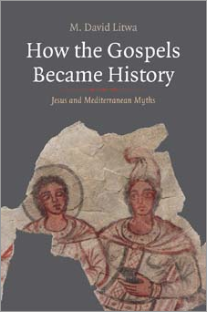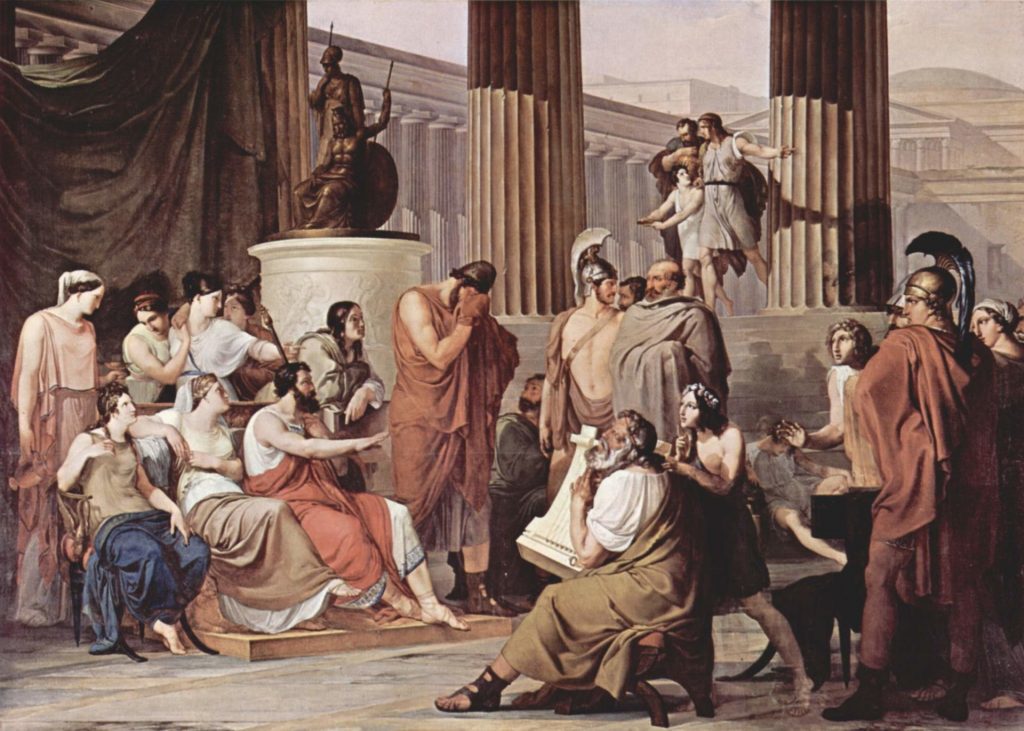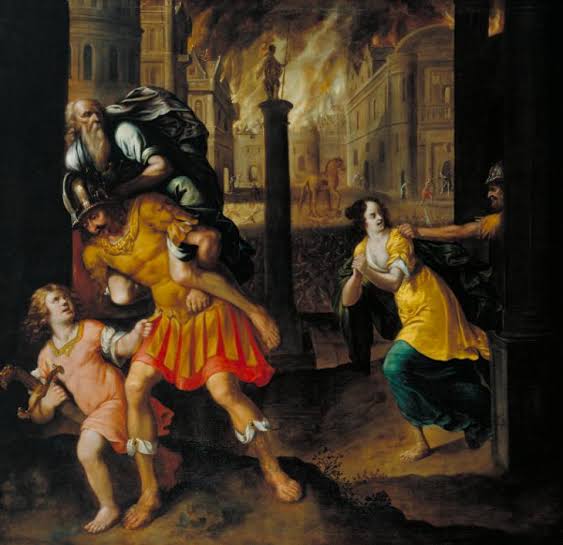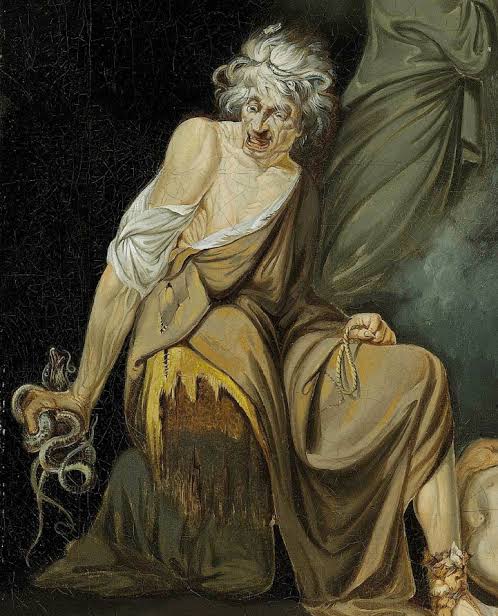[I have copied the following comment by Greg Doudna to a post here so the thoughts do not get lost in the comments section and are easier to read and engage with. Format slightly changed — Neil]
–o–
The argument that the “we” passages of Acts are an origin story of the church at Rome starting from Troy, sort of like the way (here in the northern hemisphere) the Pilgrims on the Mayflower is a foundation story told each Thanksgiving of how “we” Americans came to North America from Europe . . . is intriguing. Without gainsaying the intriguing positive part of your argument, an objection is that in its present form, Acts does not make a point of starting from Troy. Yet the “we” from Troy to ending up in Rome is sufficiently striking that it seems there must be something to what you suggest, here and in your previous series on this on Vridar (all of which I went back and read). That is, on the one hand, something seems to be there, but on the other hand it seems so subtle it seems questionable that the author of Acts intended it or that ancient first readers would have noticed. Therefore let me make some probings that might address this objection, basically in terms of a source interpretation.
1.
First, that the “we” is the final author of Acts, despite the presentation of Acts that that is the case, cannot be correct on chronological grounds of the dating of Acts. Much literature and argument here with which you and most here are familiar, but here is one that I have not seen cited here or receive much attention anywhere yet, but which appears solidly and independently to argue for, indeed may establish, a mid-second CE dating of Acts: Laura Nasrallah, “The Acts of the Apostles, Greek Cities, and Hadrian’s Panhellenion”, JBL 127 (2008): 533-566. Also and separately arguing for the same mid-2nd CE dating, David Trobisch, “The Book of Acts as a Narrative Commentary on the Letters of the New Testament: A Programmatic Essay”, pp. 119-127 in Gregory and Rowe, eds, Rethinking the Unity and Reception of Luke and Acts. Andrew F. Gregory, C. Kavin Rowe (University of South Carolina Press, 2010).
2.
Second, that the “we” reads as the author or the author’s circle inviting readers’ identification vicariously–an inclusive authorial “we”–is the portrayal, yet that cannot be correct historically, therefore it is deception on the part of the actual author. Third, while earlier comments you have made show well that Acts is not history in the sense of Thucydides or Josephus, and is fiction-like, at the same time I question that it is properly called fiction either. Were not ancient romances and actual ancient fiction understood by readers to be just that–entertaining stories, not to be taken too seriously, not history? (Like Jesus’s parables or Aesop’s fables.) But Acts reads as intended by first authors and readers to be understood as history, tendentious history, but history, analogous to the way colonists’ might answer outsiders if asked “where do you come from? how did you get here?” Acts seems to be analogous to conscious writing of a foundation story, constructed history, not meant to be objective but to establish a shared foundation story understood emically as history . . . “our history”, “history as we have decided it to be” . . . in a text which explains–as a claim of history–why salvation history has come to where it now is, in Rome. (With the harmonization of Peter and Paul founding figures and the golden age of the first generation all part of this.) The “we” device works with this in Acts’ final form literarily.
3.
From here I now move to increasingly tentative conjecture. The starting point is the “we” passages may be from a source reworked. It is generally understood that Acts has worked from and reworked other sources, such that it is not unreasonable to suppose the “we” itinerary may be one more. I am not going to try to prove that, but assume that for purposes of conjecture going forward, in which, if that assumption is correct, some interesting possibilities may or may not emerge.
4.
Fourth, it has been brought out (Hyldahl, Justin Taylor and others) that the “we” passages connect together in what reads as originally a single itinerary, despite reading in present-form Acts as separated in narrative over a period of years. The conclusion seems to be that an original itinerary has somehow been “exploded” with narrative filler in between sections of an original connected “we” source itinerary.
5.
Fifth, though I do not have space to go into this point here, suffice it to say I am convinced the ship voyage from Jerusalem to Rome of Acts, and the ship voyage of Josephus to Rome in Vita, are the same ship and shipwreck. I do not find fully convincing that the similarities in details are explicable in terms of literary tropes; instead, it is two versions of the same ship and voyage. I perceive that the only reason this is not more recognized is because of a perception of a chronological discrepancy of ca. two years. Yet the dating of Paul’s voyage to Rome in Acts depends on the datings of the Felix/Festus and Festus/Albinus accessions which continue to be recognized as problematic, uncertain, and debated as to specific years. The argument for identity of the two ship voyages seems to me to be sufficiently strong as to itself justifiably introduce weight on the still-unresolved issues of the dating of the Felix/Festus accession.
6.
Continuing, sixth, the strong study of William Sanger Campbell, The “We” Passages in the Acts of the Apostles: The Narrator as Narrative Character (Leiden: Brill, 2007) is of interest, in arguing that “we” replaces the role of Barnabas narratively. As Acts has it, Barnabas exits the picture at 15:39 before the “we” narratives begin at 16:10, but Acts has arguably mixed up and rearranged story fragments and doublets in its narrative construction. I suggest (this is not Campbell) that the long-disputed mystery of who “we” is may be resolved as: it is the voice of Barnabas. The voice is that of Barnabas, of the original source where we read “we” in the second part of Acts.
7.
This then raises the question of who was Barnabas? I suggest consideration, seventh, that Barnabas could be none other than Josephus, and that the “we” source, which ends at the point of Paul’s trial in Rome, could be something of an ancient account, in first-person voice, of a legal advocate for Paul, namely Josephus, somehow related to Paul’s trial in Rome.
Begins and ends with Josephus?
Continue reading “Guest Post: Further Thoughts on the “We Passages” in Acts”
Like this:
Like Loading...







